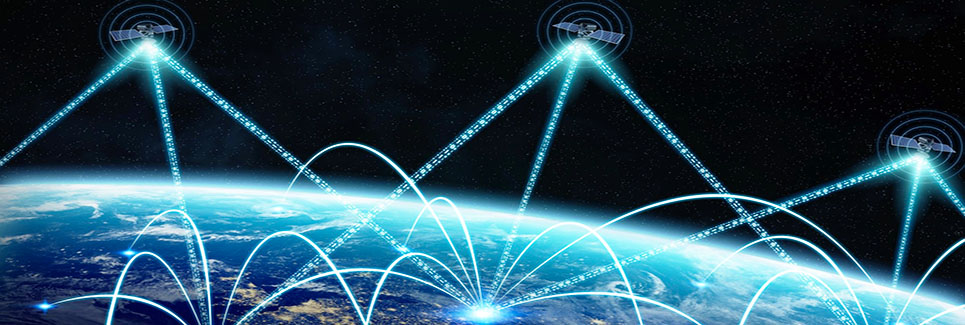
- userLoginStatus

Spacecraft Attitude Dynamics and Control
Synthetic program:the course provides the basic knowledge on the angular motion of a rigid satellite, on sensors and algorithms for attitude determination, on actuators and attitude control laws.
Attitude Dynamics and kinematics of spacecraft
- Spacecraft Dynamics: Angular momentum and Energy,Euler equations – Torque-free motion of a rigid body - stability - simple spin stability (with and without energy dissipation), dual-spin spacecraft - numerical and analytical analysis.
- Attitude Representation and kinematics: Mathematical representation of rotational motion using (i) Direction cosine matrices (ii) Euler axis and angle (iii) Quaternions (iv) Gibbs vector (v) Euler angles. Frames of reference
- inertial frame, body fixed frame and the LVLH frame.
- Space environment modelling: Developing approximate models of environmental disturbance torques due to air drag, solar radiation pressure, magnetic torque, gravity gradient.
- Implementation in Simulink: Implementing the dynamic and kinematic equations of a spacecraft in low Earth orbit for analysis, control development and actuator sizing.
Attitude Determination and Control
- De-tumbling: development of basic de-tumbling control algorithms for spacecraft in the case of continuous actuation and "on-off" actuation typical of thrusters. Stability analysis of the controlled system via enery based methods. Consideration of disturbances in the proof of stability. Angular velocity measurement with gyros.
- Attitude pointing and 3-axis stabilization: Control algorithms for pointing and 3-axis stabilization in Earth orbit based on the Local vertical Local horizontal frame and linear control methods such as LQR for continuous and discrete controls. Stability analysis of spacecraft motion in Earth orbit.
- Attitude determination: Determination algorithms (for pointing and 3-stabilization applications) based on Linear state observers in the LVLH frame using single vector reference sensors e.g. Earth horizon sensors and Sun sensors
- Static determination methods: using combinations of sensors to compute the attitude of the spacecraft e.g magnetometers, Sun sensors, Earth horizon sensors and star sensors. The development of algorithms based on algebraic methods e.g TRIAD and numerical methods e.g. q-method, QUEST method, constrained and unconstrained optimization.
Advanced spacecraft attitude control
- Introduction to nonlinear control design: Attitude control design for spacecraft based on Lyapunov control functions. An application to de-tumbling and slew motions.
- Attitude control for typical spacecraft actuators: Based on the control laws developed in the previous sections (ideal control) develop control laws for real actuators such as reaction wheels, control moment gyros, magnetic torquers and thrusters. Use SIMULINK to size actuators. Develop unique control laws for thrusters and magnetic torquers including the case where you cannot provide torque instantaneously in every direction.
- Robust control: Designing attitude controls that are robust to uncertainties and disturbances using sliding mode control and extended state observers.
- Nonlinear tracking control: Designing attitude tracking references and controls that can undertake continuous motion such as pointing to the Earth while motioning to maximise power generation.
Lecture Notes
Complete course:
| Type | File name | Year |
|---|---|---|
| Digital notes | Complete course notes | 2018/2019 |
| Digital notes | Complete course notes part 1 | 2016/2017 |
| Digital notes | Complete course notes part 2 | 2016/2017 |
Divided by topic:
| Type | File name | Year |
|---|---|---|
| Digital notes | Appunti relativi alla | 2018/2019 |
Other:
| Type | File name | Year |
|---|---|---|
| File not available... | ||
Exercises
Complete course:
| Type | File name | Year |
|---|---|---|
| File not available... | ||
Divided by topic:
| Type | File name | Year |
|---|---|---|
| File not available... | ||
Other:
| Type | File name | Year |
|---|---|---|
| File not available... | ||
Exams
First partial exam:
| Type | Date | |
|---|---|---|
| File not available... | ||
Second partial exam:
| Type | Date | |
|---|---|---|
| File not available... | ||
Full exam:
| Type | Date | |
|---|---|---|
| File not available... | ||
Oral exam:
| Type | Date | |
|---|---|---|
| File not available... | ||
Multiple choice test:
| Type | Date | |
|---|---|---|
| File not available... | ||
Other:
| File name | ||
|---|---|---|
| File not available... | ||
Other
Laboratory:
| File name | Year | |
|---|---|---|
| File not available... | ||
Projects:
| File name | Year | |
|---|---|---|
| File not available... | ||
Presentations:
| File name | Year | |
|---|---|---|
| File not available... | ||
Collections of notes, exercises or exams:
| File name | Year | |
|---|---|---|
| File not available... | ||
Tables:
| File name | Year | |
|---|---|---|
| File not available... | ||
Etc:
| File name | Year | |
|---|---|---|
| File not available... | ||
Live
Quick daily notes, exercises and audio recordings. Files will be approved on priority but deleted after 365 days. 2 points will be assigned by default.
Quick contents:
| File name | Date | |
|---|---|---|
| File not available... | ||







